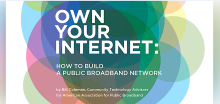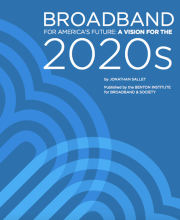Event: How to Build a Public Broadband Network
Tune in June 11 for the third and final installment of a new webinar series aimed at local government leaders thinking about building publicly owned networks. Hosted by the American Association for Public Broadband (AAPB) and the Benton Institute for Broadband and Society - both veteran organizations in this space - the event aims to unpack key considerations in the building and operation of community-owned networks.
The first two webinars in the series took place in April and May, and featured conversations with industry experts on the factors that go into deciding whether to embark on a path to building publicly owned broadband and understanding the models available and when pursuing a partnership is the right path.
The webinar series as a whole follows the publication of a guide by AAPB and Benton published this spring called Own Your Internet: How to Build a Public Broadband Network [pdf]. It is packed with analysis, practical advice, and lessons learned on everything from feasibility studies to business models to financing to marketing, as well as case studies in Ohio, Texas, Utah, and more.
This third event - titled Implementation - Building and Operating the Network - rounds out the series with infrastructure builders and the General Manager of Waterloo, Iowa’s municipal network, which has been building since September 2022. See the full schedule below:
Webinar Three: Implementation - Building and Operating the Network
June 11th, 12 pm - 1pm ET
The last webinar will focus on the challenges of and strategies for building the physical infrastructure and launching services. Panelists will discuss how they manage complex operations while also adapting to changing conditions, all in view of a community invested in their broadband.
Bill will be joined by:
- Suzanne Heritage, Underline
- Sachin Gupta, Cetranet Fiber
- Eric Lage, Waterloo Fiber
- Jon Willow, Community Broadband Action Network
Register for the event, which runs from 12p to 1p ET on June 11th.



